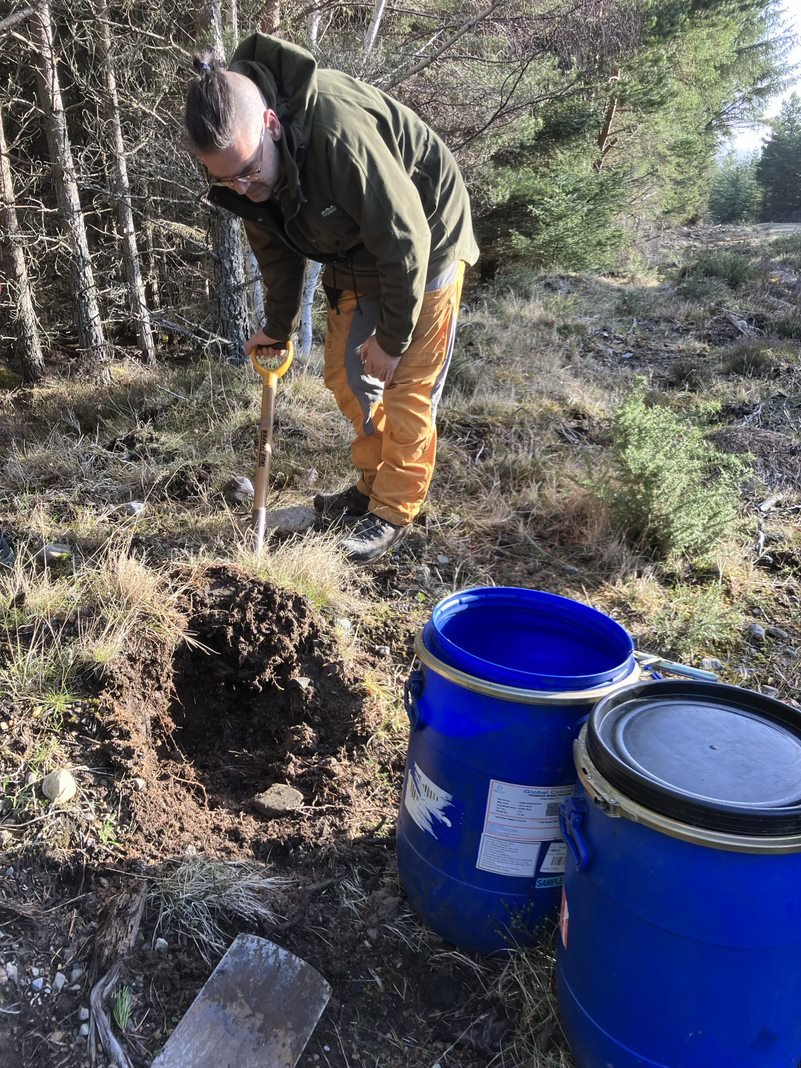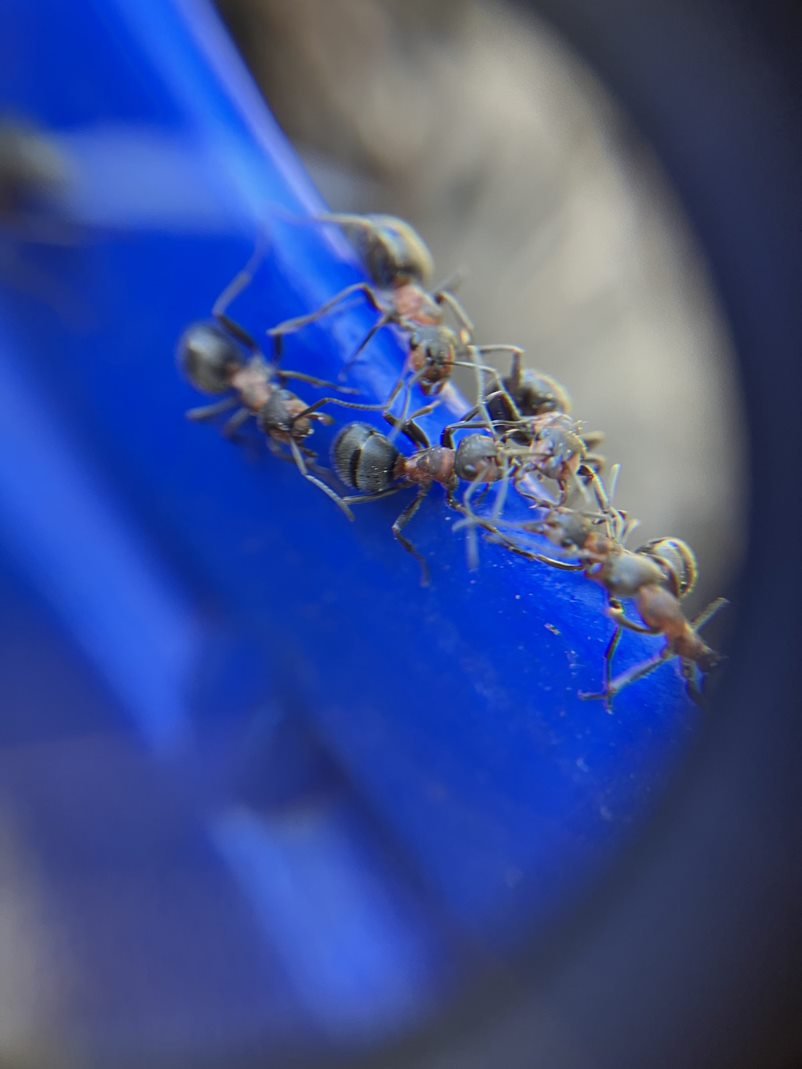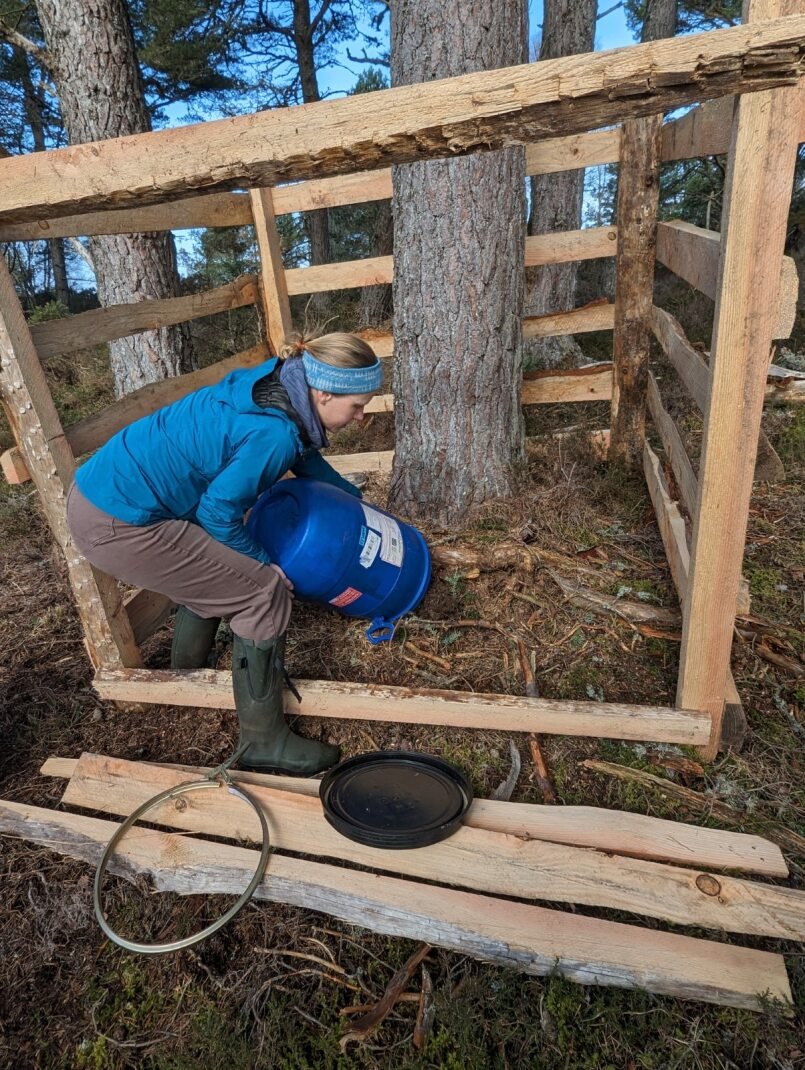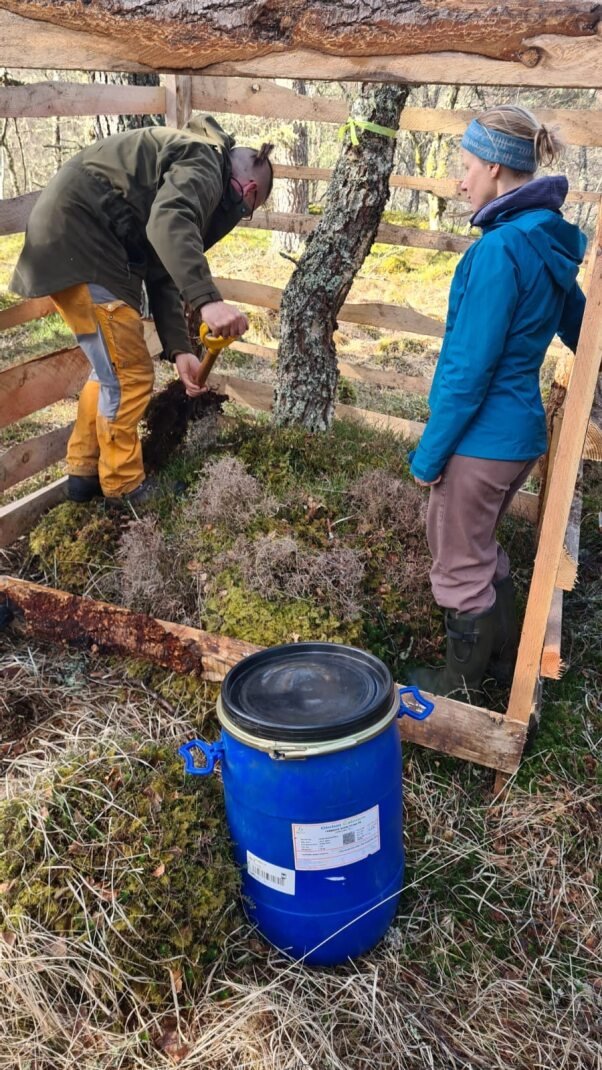Reintroducing the small but mighty hairy wood ant
When species reintroductions are mentioned in the context of a rewilding project, thoughts tend to turn to wolves or lynx. However, we have reintroduced a much smaller species back into our pine woodland, but one which plays a disproportionally big role in the ecosystem: the wood ant.
In Scotland, there are two ‘true’ wood ant species; the Scottish wood ant Formica aquilonia and the hairy wood ant Formica lugubris. Their ranges overlap but the Scottish wood ant is less common and found in older, closed canopy woodland, while the hairy wood ant is often found along woodland edges or clearings. Both are important ecosystem engineers as they disperse seeds, affect tree growth, cycle nutrients, impact other invertebrate populations and also provide a source of food for species including some birds and spiders.
They have a particular and fascinating relationship with aphids, who feed on tree sap in the forest canopy. Aphids excrete excess sugars as ‘honeydew’ and this forms up to 90% of the wood ants’ diet. The ants ‘milk’ the aphids, often protecting them from predators, and carry the honeydew back to their nests, which also transfers carbon down into the forest soils. In fact, their role within forest ecosystems is so important that they’re considered keystone species, and we were keen for our woodlands to again be more complete under their influence.
Wood ants are easily recognisable by the large mound nests they create on the forest floor – and their absence is noticeable in Bunloit’s pine woods (although they are fairly close by at Grotaig, approximately 5km south). The reasons for this absence are not known but could be related to historic losses in woodland cover. Further west in Glenurquhart is a large area of Forest & Land Scotland land, which does have a good population of hairy wood ants, with many nests observed along the forestry track edges. FLS were happy for us to translocate four nests from this area to Bunloit, particularly as the habitat there is not guaranteed because of potential future forestry operations.
Hairy wood ant nest, prior to translocation. Note the crowd of ants clustering on the surface to catch the early morning warmth.
Wood ants start to become active after the winter in the first warm days of spring and they can be seen crowding on the surface of the nest, catching the first rays of sunshine. The queen ant will likely be there too, before she descends to the heart of the nest to spend the next weeks laying eggs – the development of which will be helped by the heat that the ants have soaked up from the sunshine and brought back below. Like all social insects, wood ant colonies are made up of the queen and her daughter workers (with sometimes more than one queen in a nest). The worker ants, as their name suggests, do the work of the colony; collecting food, building and repairing the thatch of the nest, feeding the larvae and defending the colony. Later in the summer, the queen will switch to laying eggs destined to become new queens, as well as unfertilized eggs, which will become males. These new queens and males have wings and later in summer will take to the air and find each other on ‘nuptial flights’, after which the males will die and the mated queens will lose their wings and either join the larger colony or set off with a small band of workers to start afresh.
Early spring is the best time to translocate a colony, as most members are clustered together and not yet spread out into the woodland. So we chose a sunny early morning in April and, armed with spades and barrels, selected the nests to move, dug them into the barrels (taking care not to inhale too much formic acid! – wood ants defend themselves by spraying this acid from their behinds) and brought them back to their new home at Bunloit.
We had already identified the sites to place them, choosing the base of a birch or pine tree, with a south-east aspect and only partial canopy cover. We had also build wooden exclosures around the sites, to protect them from wild boar until they become established. The ants survived the move and were immediately busy, presumably sorting out the chaos that their nests had become.
Carrying the nests to their new homes on Bunloit
We gave them some food (honeybee fondant), which will hopefully tide them over until they establish their foraging routes again. We are keeping a close eye on the nests, as well as monitoring the surrounding insect communities – it will be really interesting to see how the ants impact the latter and we wish them all the very best in their new home.






